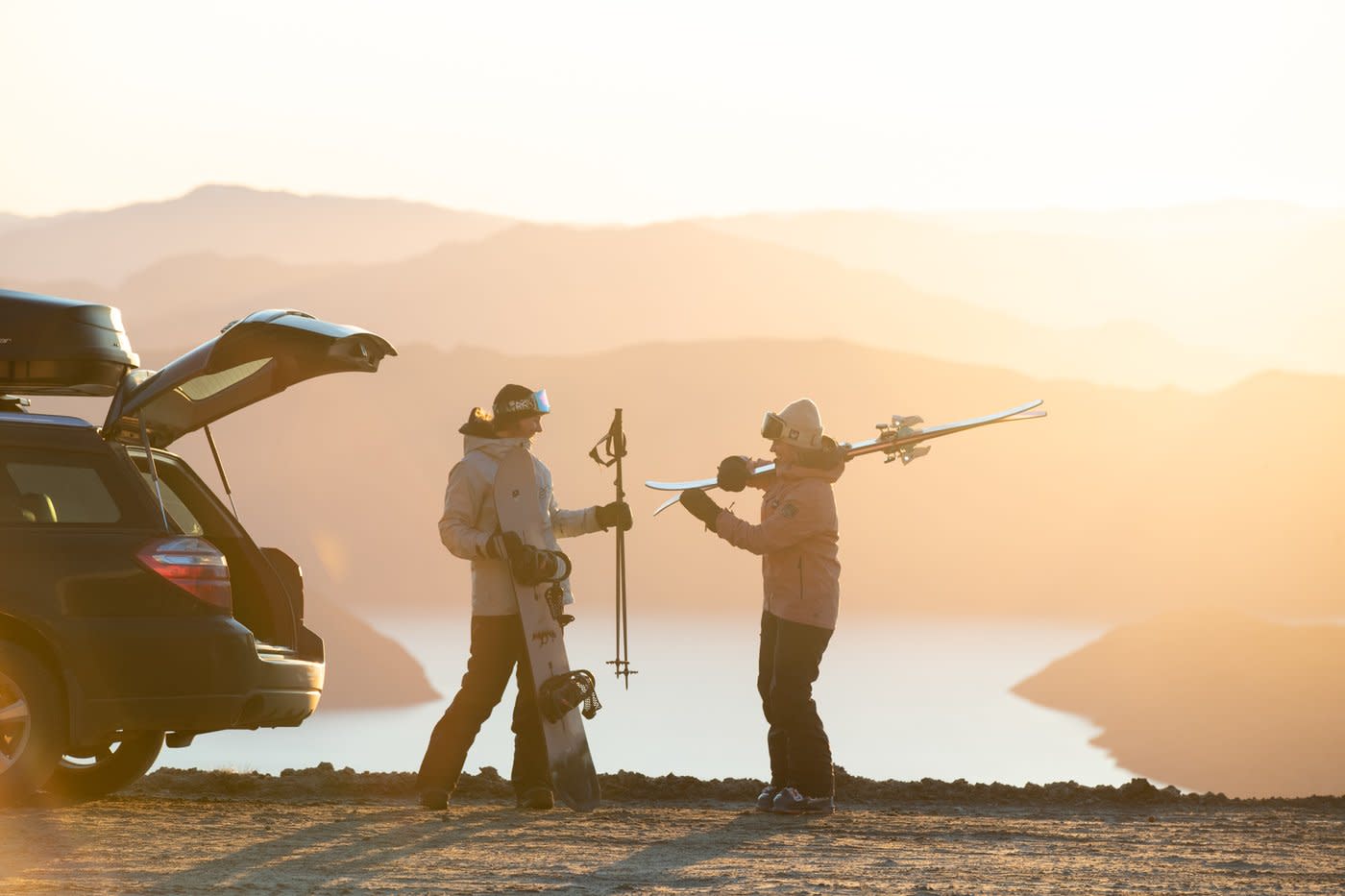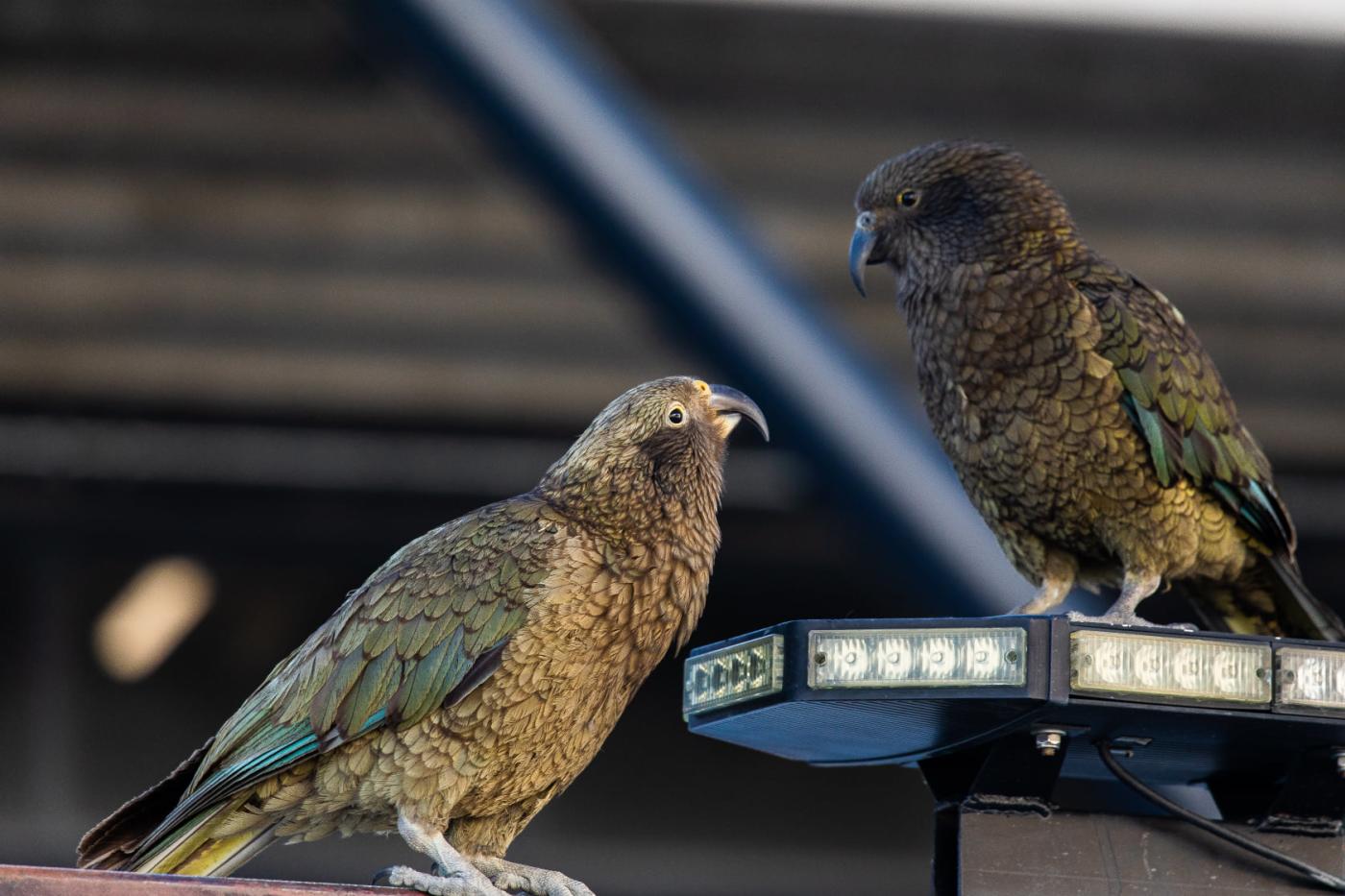Here’s your guide to all the good things happening on our slopes, along with some ideas for how you can join the journey when you visit Queenstown this winter.
Coronet Peak & The Remarkables
Coronet Peak and The Remarkables ski areas are managed by NZSki, who see themselves as the Kaitiaki (guardians of their mountains). Their environmental focus is on controlling wilding pines and pests, revegetating the slopes with native plants, and minimising their impact through energy-efficient snow making and grooming, waste management, and shared transport.
Paul Anderson CEO of NZSki says, “The simple truth is that reducing our carbon footprint and becoming a more sustainable business is not someone else’s job. It’s our job. And we’ve been moving gradually towards being a more sustainable business, quietly building our credentials and tangible initiatives to the point where we’re ready to talk about it more.”
“When we talk about operating a sustainable business, we’re not just talking about our carbon footprint. That’s essential. But it’s more than that. If you care for your staff, your environment and your visitors, that will create financial outcomes that mean you can do that next year, and for many years to come. It’s about taking a balanced view of business. So, it’s important for us to embed carbon reduction and environmental enhancement into our business because for us to operate for decades to come we have to lead the way.”
“Working with our team on sustainability is so motivational. We have 1,400 staff at peak season, and they’re all passionate about the environment we operate in. From a leadership perspective, there is a massive expectation from our staff to do the right thing.”
 Coronet Peak Ski Area
Coronet Peak Ski Area
Pest eradication & planting
Before Coronet Peak and the Remarkables became ski areas, they were grazed by sheep, reducing their native vegetation. Since the slopes are no longer used for farming, vegetation has begun to naturally regenerate. NZSki is committed to accelerating the return of biodiversity by controlling wilding pines, weeds like broom and birch, and eradicating pests like hares, possums, hedgehogs, and stoats.
At the same time, they collect seeds and propagate native plants, including tussocks, mānuka, kōwhai, and hebes to restore and replant ski field areas. Coronet Peak plants more than 1,500 native plants each summer. At the Remarkables, they’re working to clear 20 hectares of non-native flora and replant with native forest, as part of the Billion Tree Project’s goal to plant one billion new trees in New Zealand by 2028.
 Tree planting, Coronet Peak
Tree planting, Coronet Peak
Reducing waste
All movements are a series of small steps, and reducing waste at Coronet Peak and the Remarkables is no different. Here’s a few of the sustainable choices NZSki have made.
- They’ve stopped using takeaway cups, saving over 70,000 coffee cups and water beakers from going to landfill each year.
- Single-use plastic food packaging has been replaced with dishes, glasses, ceramic cups, compostable or recyclable boxes.
- They’ve replaced all single-packet sauces with self-serve catering bottles.
- All glass waste is collected, crushed into sand, and used on the mountain for building.
- All cans, plastic and clean cardboard get sorted and recycled.
- All of Coronet Peak’s food waste and paper/cardboard food packaging is hot composted and used for planting projects. The Remarkables compost their waste at their worm farm.
Minimising emissions
The team at Coronet Peak and The Remarkables encourage guests to ride-share using Snow Riders NZ, or to take buses. One bus ride can offset 50-60 car trips. NZSki’s Ski Bus departs from the centre of Queenstown to both ski areas. A return trip is $30 and passengers will need to reserve their spot online in advance.
 Coronet Peak/The Remarkables Ski Bus
Coronet Peak/The Remarkables Ski Bus
Cardrona & Treble Cone
Cardrona Alpine Resort and Treble Cone are both managed by RealNZ. The group recently appointed a Chief Conservation Officer to lead conservation and sustainability. This is the first time a major New Zealand tourism business has created such a senior conservation role.
Sally Norman, the Base Ops Manager for Cardrona and Treble Cone says, “Our ski experiences are in remote locations, and we want to help people fall in love with the mountains and care for them. We recognize the importance of people and place, we know they have to work in harmony, and caring for both is at the heart of what we do. And we want to provide leadership, educate, and inspire others because individually we can do our bit, but when we come together, we’re so much stronger.”
“We’re guardians of this place, and when people come and work with us, they join that journey. This place is very special, the mountains are very special, and protecting them for future generations means a lot to me and to the passionate people in our team.”
 Skiing at Treble Cone
Skiing at Treble Cone
Waste management
The Cardrona and Treble Cone team have a big focus on waste management, monitoring how much waste they produce, and working with zero waste advocates Wastebusters to make a more sustainable waste management plan. They’ve also appointed a dedicated waste management team on the mountains who sort, process, and package waste.
- They’ve removed single-use coffee cups, crockery, and PET plastic bottles from their cafes and restaurants, saving around 25,000 cups from landfill each year.
- They’re reducing packaging by serving beer on tap and getting milk in 10 litre bags.
- In 2021, they got rid of landfill bins at both mountains. Rubbish bins have been replaced with recycling and compost bins
- They now refuse to sell food or drink with packaging that goes to landfill. Suppliers have supported this move, with snack fav Cookie Time developing a compostable bag.
- Food scraps are sent to a local free-range chicken farm, to prevent them going to landfill, and releasing methane as they break down.
- Glass bottles are crushed and used on-site in trenches and to grit the road.
- All scrap metal is collected. Most is reused on the mountain. The remainder is recycled.
- Team uniforms are repurposed by being rebranded and sold as a preloved alternative to buying a new uniform. This keeps quality clothing out of landfill.
- The old base building at Cardrona is being slowly upgraded, repurposed, and recycled over time, to make the modernisation process more sustainable.
 Zero-landfill lunch at Cardrona Alpine Resort
Zero-landfill lunch at Cardrona Alpine Resort
More sustainable transport and snow grooming
With most New Zealand electricity produced from sustainable sources, ski fields’ largest source of carbon emissions are their vehicles. Current electric vehicle tech struggles to operate in tough alpine conditions, so until all ski industry vehicles can be electrified, Treble Cone and Cardrona are working to reduce their use of fossil fuel. They invest in the most efficient diesel and petrol vehicles they can find. Their newest snow groomer gives off 90% fewer emissions than the equivalent model 20 years ago.
Their bus fleet produces one-third of the emissions per passenger of a car or a van. Bus services from Queenstown and free shuttles from the base of the mountain are the most efficient way to get to the snow, and most mountain staff commute to work this way. A dedicated ‘hitching zone’ at the base of each mountain encourages ridesharing.
 Ridesharing at Treble Cone
Ridesharing at Treble Cone
Revegetation, predator control & supporting wildlife
The team at Cardrona and Treble Cone are working to leave the mountains better than they found them. Sally says, “Our sustainability lead Ewan Mackie and his team have done amazing work building the sustainability initiatives at Cardrona and Treble Cone. Our Plant A Seed Project regenerates native plant species on the maunga (mountain) and provides habitat for birds, lizards, and insects.” The team are partnering with the Department of Conservation to protect a mountain population of rare gecko and skink.
“Wherever we’ve intervened on the landscape with earthworks, we regenerate it back to its natural state. The organic waste sent to our compost facility goes to feed our native plants. The team are also doing some really good work engaging with the local community and schools to help them learn about regenerating ecosystems.”
“We’ve also got our predator-free maunga trapping initiative. To regenerate biodiversity, we must remove introduced predators. There are traplines established on both mountains and we take part in community workshops to make traps for the local trap library.”
Helping all tamariki enjoy the snow
Cardrona and Treble Cone run a Tamariki Ride programme where they work with local schools and community organisations to identify families who could do with some assistance to get their children skiing and snowboarding. A team of volunteers run snow experiences for these kids.
 Cardrona Alpine Resort
Cardrona Alpine Resort
United in bringing back native Kārearea & Kea
All four mountains are united in their commitment to protecting New Zealand native birds.
The Kārearea or New Zealand Falcon is Aotearoa’s only endemic falcon. They nest directly on the ground, which makes them vulnerable to pests and mechanised farming. There are no more than 5000 breeding pairs left in the country. The team at Coronet Peak work hard to ensure the mountain is a safer place for their breeding Kārearea pairs through pest control and revegetation. While Cardrona and Treble Cone lead the Cardrona Valley Kārearea Project to protect their population of falcons, a community project, with oversight by Parker Conservation to provide data to inform and enable effective conservation.
Both the Remarkables and Treble Cone have a partnership with Queenstown’s Kea Conservation Trust. They provide funds for research and education, and volunteer time to help monitor kea and understand population health. The long-term vision is to make the Queenstown mountains a safer place for kea to live.
The teams on the mountains also help educate visitors on how to protect these critically endangered birds. Because kea are so engaging and curious people often feed them, but this can make them ill and discourage them from foraging for food in the wild. Removing rubbish bins at Treble Cone has stopped kea scavenging for food waste, and they don't hang around at lunchtime anymore because people aren’t feeding them, which is great progress.
 Kea at The Remarkables
Kea at The Remarkables
How can you help protect the peaks?
Here are a few ways you can help protect Queenstown’s spectacular ski areas.
- Bus to the slopes. Book the shuttle from Queenstown to any of the four peaks, or if you’re heading to Cardrona under your own steam, grab the free mountain shuttle from Pines Carpark at the bottom of the access road to be dropped off right outside the ticket office.
- Don't forget your water bottle. Relax and enjoy lunch with a view in one of the ski field cafés, knowing that you’re creating less waste than a takeaway. And if you do bring snacks with non-compostable packaging, please take your rubbish with you when you leave.
- Report any kea sightings at The Remarkables or other spots around the Whakatipu. This helps the Kea Conservation Trust's research on the to care for the kea population.
- Don’t feed the kea. We know they’re cute and cheeky but take a picture instead.
- Donate to Love Queenstown to support local climate, conservation and biodiversity projects that actually make an impact.
Our Queenstown stories are packed with more ideas to help you get more out of your ski trip to Queenstown. As you explore Queenstown, share your experiences with us on Instagram and #QueenstownLive.
